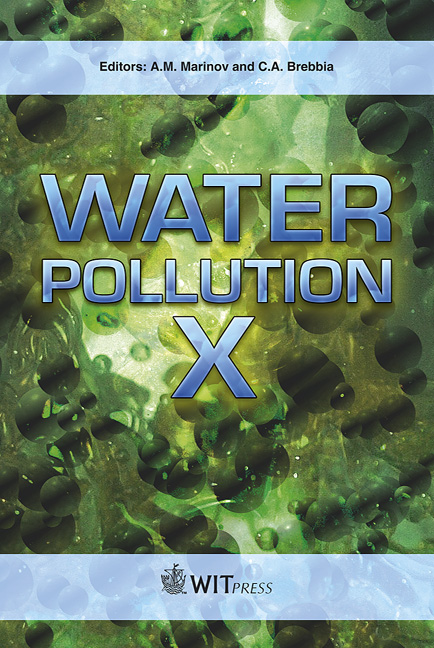Determination Of LC50 Of Diazinon Toxin And Linear Anionic Detergents On Rutilus Frisii Kutum
Price
Free (open access)
Transaction
Volume
135
Pages
9
Page Range
207 - 215
Published
2010
Size
326 kb
Paper DOI
10.2495/WP100181
Copyright
WIT Press
Author(s)
A. Tehranifard, M. Fazeli & J. Yarabbi
Abstract
Diazinon is a pesticide that is commonly used in the rice fields of northern Iran The harmful effect of Diazinon and two anionic detergents were determined on Rutilus frisii kutum, individually and together on a laboratory scale. Fish were adapted to laboratory circumstances, distributed species wise in 500 litre tanks. Experiments were performed according to the TCR standard procedures. The LC50- 96 h was 0.34 mg/l for Diazinon. The LC50- 96 h in same species fingerlings were 4.69 and 12.24 mg/l under liquid and powder detergents, respectively. The LC50- 96 h were 7.27 and 0.9 mg/l for a mixture of Diazinon and liquid detergent and a mixture of Diazinon and powder detergent, respectively. The result showed that the toxicity of the mixture of Diazinon and powder detergent was greater than other mixtures. Generally, the detergent concentration toxicity rate (LC50- 96 h) in the ecosystem is less than the laboratory scale, but detergent can mix with some chemicals in the ecosystem and become stronger. The mortality rate will increase under this condition. Keywords: LC50- 96 h, acute toxicity, anionic detergent, Diazinon, Rutilus frisii kutum. 1 Introduction Today, pesticides are used for many different purposes, such as agriculture, human and animal health protection, pest control in forest and aquatic environments, and the protection of buildings and other structures. The uses of pesticides are increasing because the target pests become stronger, and therefore, large amounts of detergents contaminate soil and water annually (Young [5]). Pesticides sources in the environment include those resulting from direct pesticide application for a
Keywords
LC50- 96 h, acute toxicity, anionic detergent, Diazinon, Rutilus frisii kutum





